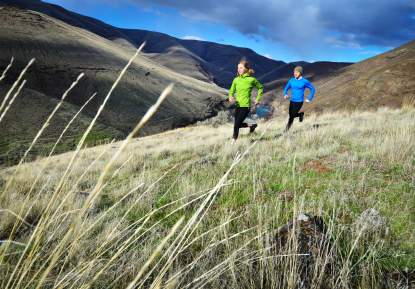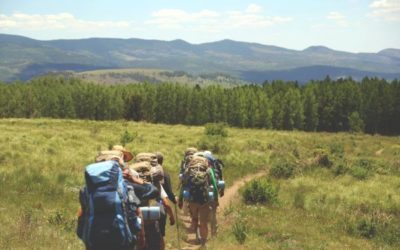This week I spoke at the Latin American Adventure Summit, at Hacienda El Refugio near Quito Ecuador. While I was away, I asked my friend Patrick Crossland to write a guest post. Patrick offers some great insight on the “hills” of ministry we climb…
Anyone who has watched the Olympic Games knows Kenya turns out some of the world’s strongest runners. One key to their success is simple—they run hills. Great leaders also know that running the hills will give them the uncommon stamina they need to lead. Runners at training camps like the “Run-Fast” camp in Kenya are trained to run up the hills in the Rift Valley, where high altitude and distance strengthen their lungs and muscles. Like those great Rift Valley runners, great leaders run to the hills of ministry to develop stamina for the race they have been called to run.
 Great leaders, don’t necessarily long for those hills to run, but they know hills can’t be avoided for growth to occur. Hills like these are mile markers in a leader’s journey: Maintaining morale on your team when numbers are dwindling numbers in your weekly ministry meetings, waiting patiently on the Lord when our souls are dry from the long hard slog of serving others, or gracefully enduring the thankless job of leading a team and keeping them unified even through conflict. While no sane leader prays for difficult seasons or experiences in their ministry, great leaders look to the hills for growth.
Great leaders, don’t necessarily long for those hills to run, but they know hills can’t be avoided for growth to occur. Hills like these are mile markers in a leader’s journey: Maintaining morale on your team when numbers are dwindling numbers in your weekly ministry meetings, waiting patiently on the Lord when our souls are dry from the long hard slog of serving others, or gracefully enduring the thankless job of leading a team and keeping them unified even through conflict. While no sane leader prays for difficult seasons or experiences in their ministry, great leaders look to the hills for growth.
RELATED POST: 7 Ways Adventure Racing Models God’s Design for Relationships
Here are three ways that running the hills of ministry can better equip as ministry leaders:
1. HILLS ADD AUTHENTICITY TO OUR PRAYER LIFE
First, the uphill run instills attributes of a great leader. The dwindling numbers at the Wednesday night Bible study teach us to persevere. Difficult seasons give sincerity and desperation to our prayer life. We garner perspective and peace as we reflect on our journey and are strengthened for the road ahead.
2. HILLS OFFER PERSPECTIVE
Secondly, it’s the hills we have in common more than the valley. Hills give us something we can relate to with any ministry leader of any culture. Once you’ve been up that hill and back down the other side, you have perspective. With perspective comes the ability to encourage those with hills in their future.
3. HILLS OPEN OUR EYES TO THE BIGGER PICTURE & FORGE STRENGTH TO GO BACK TO THE VALLEY OF MINISTRY
Lastly, hills remind us that our ministry is just a part of a bigger picture. We don’t choose them, they are already a part of the path. In 1 Cor. 9:24-27 the Apostle Paul tells the church in Corinth to run in such a way to get the prize and that running involves preparation and purpose. Paul writes, “I strike a blow to my body and make it my slave so that after I have preached to others, I myself will not be disqualified for the prize.” Certainly, Paul knew a thing or two about overcoming the hills of ministry. After having been imprisoned, stoned, shipwreck and even snake bit, Paul looks back on the path he had run and writes in 2 Tim. 4:7, “I have fought the good fight, I have finished the race, I have kept the faith.” Those are the words of a man who had been strengthened by the hills of ministry.
RELATED POST: Where Performance Anxiety Crosses the Line and Sickens the Soul
REFLECTION
- Name a few hills you have been climbing in your leadership? How are those hills making you a better leader?
- Plan to go out on a trail run and push yourself toward a goal (run for an hour, or run until you reach the peak, etc.). Sit down with the Lord and allow him to speak to you about the hills of ministry you are running, and write down some insights that you learn from the experience.




